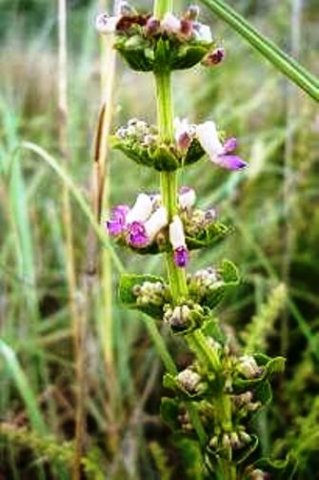Rabdosiella calycina

Author: Ivan Lätti
Photographer: Judd Kirkel Welwitch
Rabdosiella calycina, commonly know as the upland fly bush is an erect shrub in the Lamiaceae or mint family with sparsely branched stems that grow annually from a woody rootstock to a height of 1,5 m. The plant used to be called by several other names, including Plectranthus calycinus, a better known genus in the Lamiaceae or mint family.
The leaves are unpleasantly scented, sometimes have stalks, sometimes not and are broadly ovate to lanceolate with toothed or scalloped margins.
The panicles of tiny cream and velvety flowers are sometimes touched with pink or mauve on the petal tips. The corollas are hairy. The flowers appear in summer into winter. There are cup-like bracts under each set of flowers on the stem.
The species distribution is in the east of South Africa, from the Eastern Cape, the Free State and KwaZulu-Natal to Mpumalanga and Limpopo, as well as some neighbouring countries, including eSwatini.
The habitat is summer rainfall grassland. The habitat population is deemed of least concern early in the twenty first century (Manning 2009; Onderstall, 1984; iNaturalist; JSTOR; http://redlist.sanbi.org).

